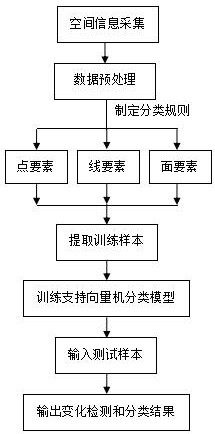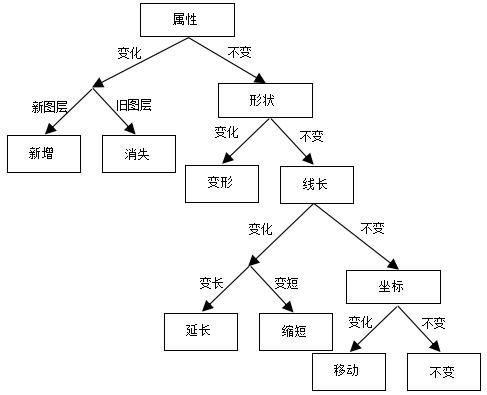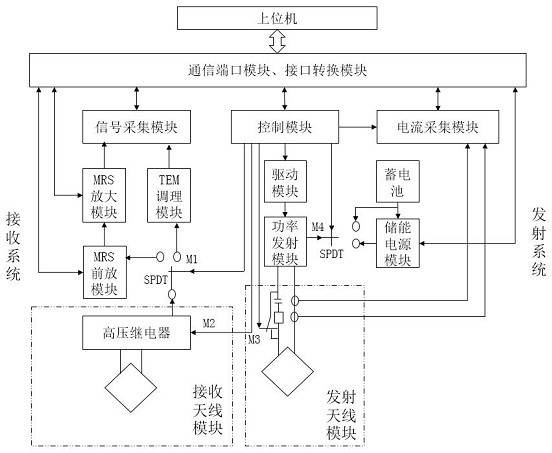Spatial Information Change Detection and Classification Method Based on Spatial Information and Statistical Learning
A spatial information and change detection technology, applied in the field of spatial information change detection and classification based on spatial information and statistical learning, can solve the problems of low overall efficiency, time-consuming, low precision, etc., and achieve improved detection accuracy, simple method, The effect of filling data gaps
- Summary
- Abstract
- Description
- Claims
- Application Information
AI Technical Summary
Problems solved by technology
Method used
Image
Examples
Embodiment 1
[0038] This embodiment takes road information as an example, and provides a spatial information change detection and classification method based on spatial information and statistical learning, including the following steps:
[0039] (1) Spatial information collection: collect new and old road information in the same research area;
[0040] (2) Data preprocessing: unify the obtained new and old road information data;
[0041] Wherein, the unified processing refers to unifying the data format, attribute format and coordinate system of the road information data before and after the change, so as to perform matching and comparison.
[0042] (3) Formulate spatial information change detection and classification rules: match the spatial elements before and after the change, and formulate corresponding change detection and classification rules according to the characteristics of the spatial elements;
[0043] Wherein, the matching of the spatial elements includes attribute matching an...
Embodiment 2
[0051] This embodiment takes groundwater distribution information as an example, and provides a spatial information change detection and classification method based on spatial information and statistical learning, including the following steps:
[0052] (1) Spatial information collection: collect new and old groundwater information in the same research area;
[0053] Using detection devices to collect groundwater information in the study area, the specific steps are as follows:
[0054] a. Select the detection area and arrange the transmitting coil in the form of a square loop;
[0055] b. Select the data collection point and lay the square receiving coil;
[0056] c. Start the detection device to detect the distribution of groundwater through the emission and reception of electromagnetic signals;
[0057] d. Use the inversion software in the host computer to invert and interpret the received information to obtain the water content at different depths of the collection point...
PUM
 Login to View More
Login to View More Abstract
Description
Claims
Application Information
 Login to View More
Login to View More - R&D
- Intellectual Property
- Life Sciences
- Materials
- Tech Scout
- Unparalleled Data Quality
- Higher Quality Content
- 60% Fewer Hallucinations
Browse by: Latest US Patents, China's latest patents, Technical Efficacy Thesaurus, Application Domain, Technology Topic, Popular Technical Reports.
© 2025 PatSnap. All rights reserved.Legal|Privacy policy|Modern Slavery Act Transparency Statement|Sitemap|About US| Contact US: help@patsnap.com



